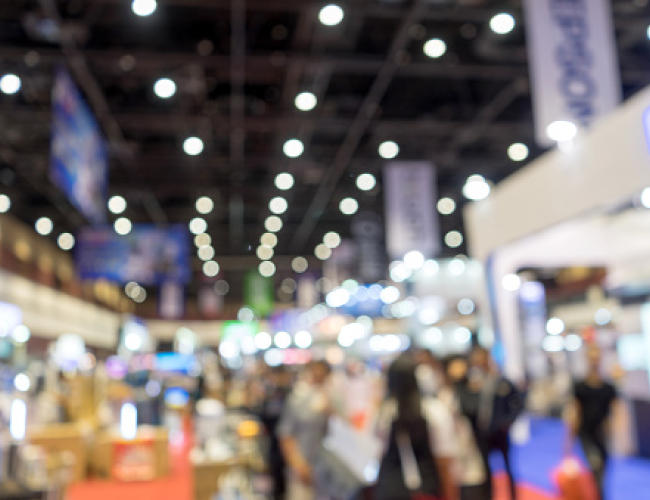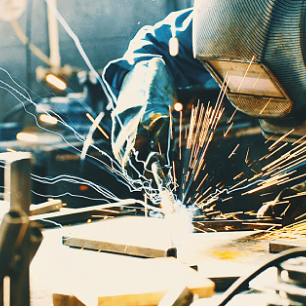Welding Digest
Jump to:
25 Hardfacing Tips: A Best Weld Overlay Practice
Hardfacing improves the service life and efficiency of metal parts that are subject to wear. Simply choosing the right product will not guarantee a good result. The base metal, wear mechanism, welding process, and application details are all equally important factors. Here are 25 guidelines that will assist in maximizing the benefits of your hardfacing applications.
Base Metal Considerations
1. Identify the base metal along with its carbon and alloy contents. Common base metals include carbon steels, low-alloy steels, manganese steels, austenitic (AISI 300 series) and martensitic (AISI 400 series) stainless steels, tool steels, and cast irons.
2. Preheating is required for higher-carbon and low-alloy steels, tool steels, martensitic stainless steels, and most cast irons. Preheating minimizes distortion and cracking and mitigates the thermal shock. Carbon and alloy contents determine preheat temperature.
3. With higher carbon and alloy steels, an abrupt cooling to ambient temperature embrittles the heat-affected zone. The cooling rate should be controlled in an oven. Other means, like a fireproof blanket or a vermiculite box, are also used.
4. Manganese steels do not require preheating besides warming up to 80°F (26.7°C). They become brittle if the base metal temperature exceeds 500°F (260°C). Avoid applying prolonged and concentrated heat. Consider water cooling.
5. When rebuilding manganese steels, remove 1/8 in. (3.2 mm) of the fatigued work-hardened surface. Failure to do so may result in underbead cracking. Also avoid using carbon steel buildup filler metals upfront. An austenitic steel buffer layer is advised.
Wear Factor Identification
6. Low-stress abrasion, or two-body abrasion, is the most common wear mechanism. It’s typical of mineral bulk handling and ground-engaging tools. Higher carbide content and harder hardfacing deposits are usually the most cost-effective solutions.
7. High-stress abrasion, or three-body abrasion, involves a crushing action, typically found in milling or fine-grinding operations. Tougher hardfacing materials with well-dispersed carbides would usually be specified.
8. High-energy impact, gouging wear, and heavy rolling imply plastic deformation and call for work-hardening deposits, like austenitic manganese steels. This is the case with primary crushers, scrap yard shredders, and railway frogs.
9. Adhesive wear or galling is typical of metal-on-metal friction under heavy loads. A homogeneous alloy steel or tool steel is usually the hardfacing choice. Well-known applications include undercarriage rollers and hot strip mill rolls.
10. Corrosion is a synergy factor for the wear mechanisms above. Wet process conditions are not necessarily a concern, but as the acid concentration increases (pH < 7), nickel- or cobalt-based alloys may become necessary.
11. Temperature is another synergy factor. Iron-based hardfacing deposits, including the chromium carbide overlays, see a significant hardness drop around 1000°F (538°C). Using a nickel- or cobalt-based alloy is an option. Thermal cycle fatigue and fire cracking are also concerns.
Filler Metal Selection
12. If dimensional restoration is needed prior to hardfacing, select a buildup material compatible with both the base metal and the final weld overlay. The chosen buildup should provide sufficient mechanical properties for the application.
13. The hardness of a hardfacing deposit is not the deciding wear-resistance factor. The percentage, characteristics, and distributions of the carbides throughout the alloy or matrix determine how well a hardfacing will resist specific wear conditions.
14. Where abrasion resistance is the primary requirement, with low-to-moderate impact, and filler metal cost is a concern, using a chromium carbide overlay is usually a good option. This is the most common hardfacing solution.
15. Chromium carbide overlays tend to cross check as they cool, producing fine cracks across the bead. This beneficial cracking pattern relieves residual stress. However, any irregular patterns, like longitudinal or underbead cracking, will lead to spalling.
16. Tungsten carbide hardfacing resists extreme mineral abrasion the best. A nickel matrix is ideal for minimizing carbide dissolution. The tungsten carbide content increases with cored wire diameter. The highest contents come with plasma transferred arc welding and laser cladding.
Welding Process Optimization
17. Select the welding process best suited for the application, balancing the dilution level with the deposition rate as well as other concerns, such as geometry, occupational safety, or automation requirements.
18. High levels of base metal dilution reduce wear resistance and the carbide fraction in the deposit. To keep the dilution rate to a minimum, a good practice is implementing lower welding settings and controlling heat input.
19. Chromium carbide overlays imply heat input control. Some base metal dilution is required for a lesser-
alloyed transition zone and to avoid underbead cracking — Fig. 1. This transition shall make up 25% of the weld thickness. On the other hand, too much heat input would compromise the desired primary carbide microstructure — Fig. 2.
20. When using open arc wires (flux cored arc welding), the stickout, or contact-tip-to-work distance, is critical. A stickout shorter than ½ in. (13 mm) will cause porosity. Small-diameter wires typically weld at a 5/8- to ¾-in. (16- to 19-mm) stickout. Large-diameter wires require a longer stickout between ¾ and 1¼ in. (19 to 32 mm).
21. Submerged arc welding fluxes affect the chemistry, hardness, bead shape, and surface aspect of the weld. Use the correct flux and wire combination. Use new and properly screened flux to prevent chemical variations. Flux overburden or an excess of fines will result in trapped gas, porosity, and surface defects.
Application Recommendations
22. If a worn part shows leftover hardfacing, you can 1) apply one additional layer of a similar material if the existing layer is sound and thinner than 1/8 in. (3.2 mm), or 2) remove the old hardfacing down to the sound base metal, especially if deep cracks are present, by using either carbon arc or plasma gouging before finish grinding.
23. A cost-saving alternative to hardfacing an entire surface is to apply weld bead patterns. Beads applied perpendicular to the abrasive flow work well for fine materials, like sand or soil. Coarse materials require beads parallel to the flow. Such beads act as runners, allowing the burden to ride along.
24. Grinding sharp corners is recommended. A hardfacing applied along a sharp edge may indeed break off under impact. Applying the hardfacing into grooves cut into impact-resistant support may also help under high impact.
25. Applying a crack-free cobalt-based hardfacing, like the Stoodite® 6-M (ERCCoCr-A), requires specific precautions. A two- to three-layer AISI 309L stainless steel buffer is often advised to match thermal expansion coefficients. Preheat should be at least 600°F (315°C), independently of the base metal, sometimes even up to 900°F (482°C).
GUY CHOUINARD (guy.chouinard@esab.com) is global hardfacing product manager at ESAB Corp., Hanover, Pa. He is also chair of the AWS A5G Subcommittee on Hardfacing Filler Metals and a member of the AWS A5 Committee on Filler Metals and Allied Materials.


